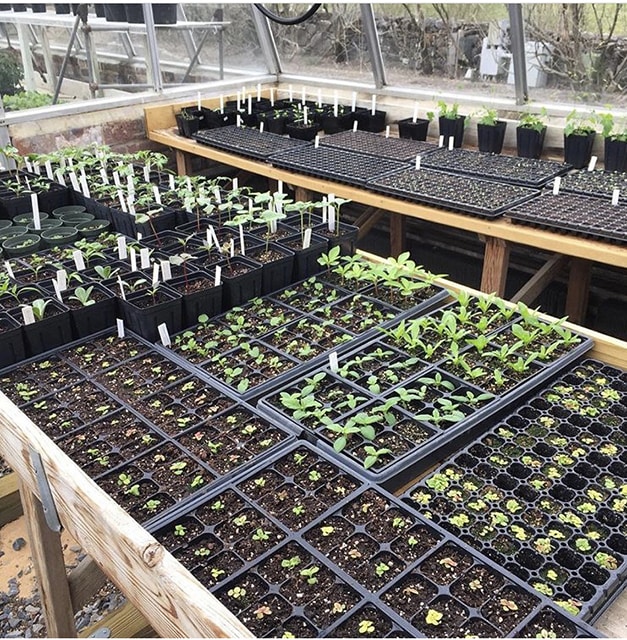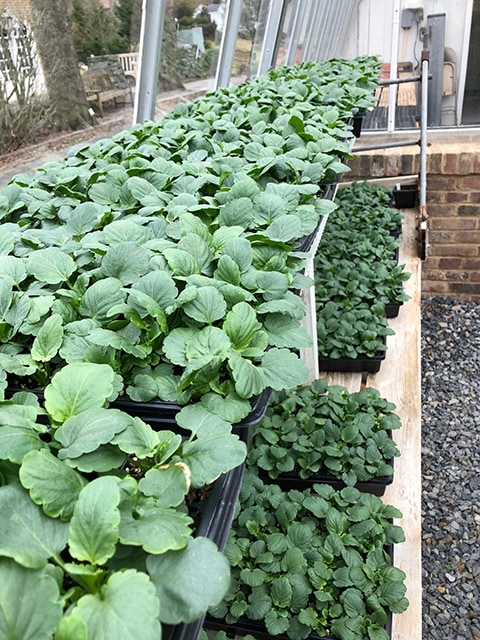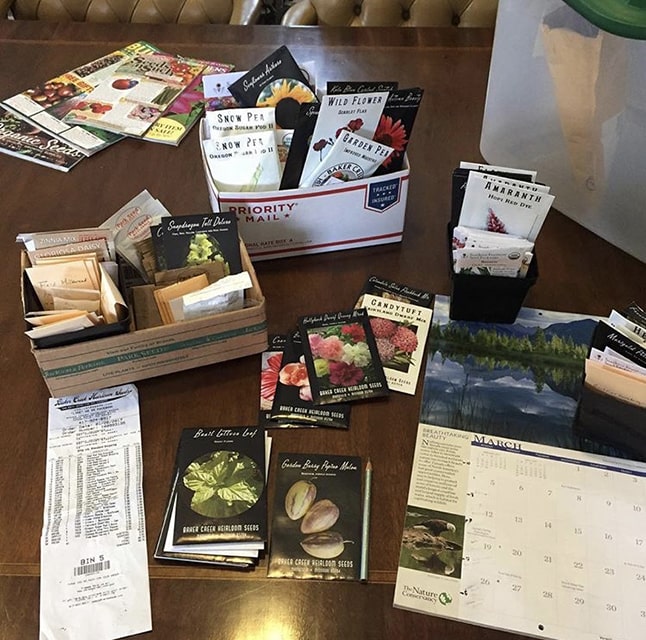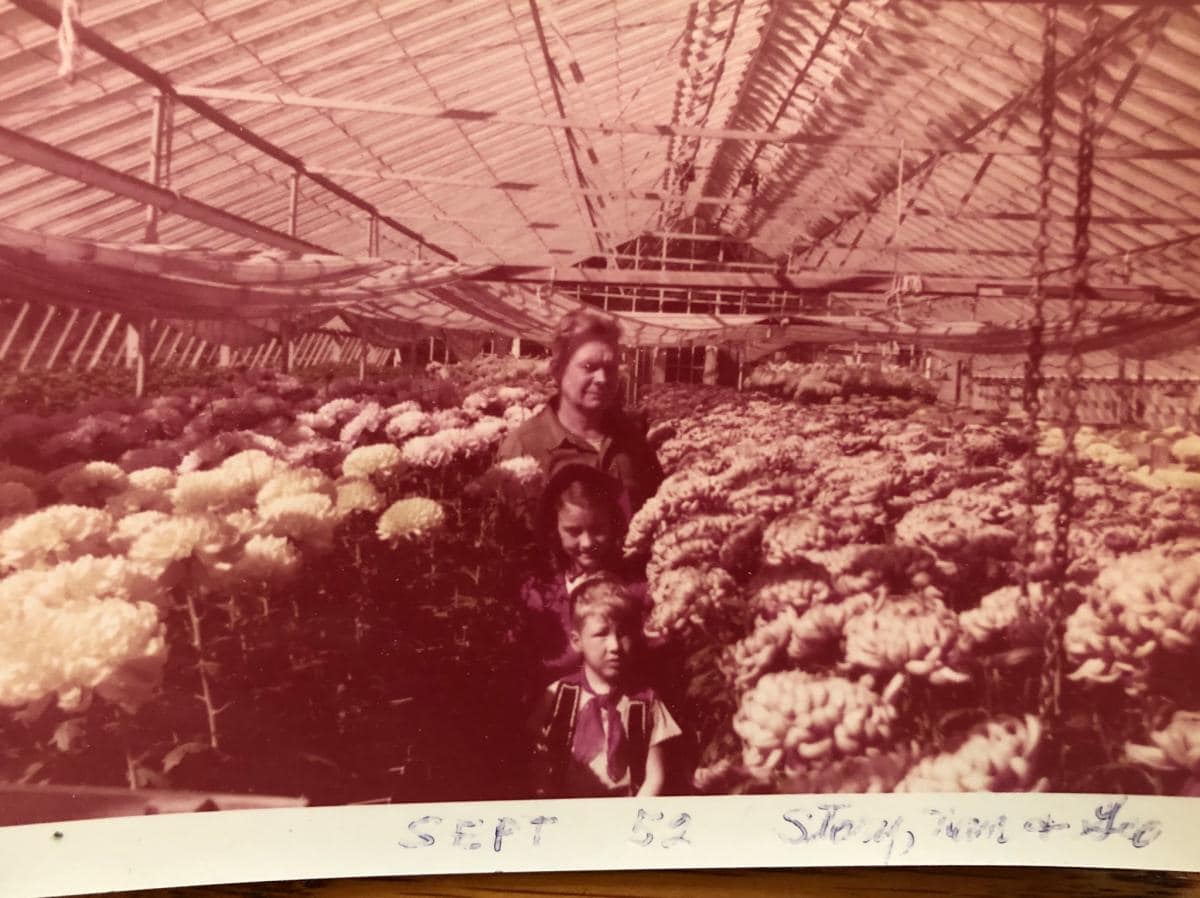In March the greenhouse is a warm puddle of sunlight…
By Horticulturist Chantal Ludder
In March, the greenhouse is a warm puddle of sunlight. The smaller section is full of pots with seeds planted but not yet germinated, and large trays full of the tiniest handfuls of green. The larger, cooler half is already crowded with the pansies destined for the spring display in the Parterre garden.
As horticulturist, I have the happy job of migrating from garden to office to greenhouse as the seasons change, and from March to May, my primary residence is the MSV Lord & Burnham greenhouse. In January the garden staff come together to discuss who wants which plants, and how many of them, and when they need to go out into the garden. Some seeds we’ll order from favorite companies and some things I will already have on hand from collecting seed that past summer. I’ll sit down with a calendar to map out when various plants need to be set into the garden, backtrack to when they should be started, and then we’re off to the races.
The greenhouse really does remind me of working in a lab in college. We start clean: if I’m not using new pots I’m using recycled pots that have been washed in a bleach solution. Potting soil is sterile, from the bag, and never reused. Fertilizer is applied as needed, by hand. Foreign plant material is prohibited. I’m not fond of most chemicals – insecticides, pesticides, fungicides – and by keeping a clean greenhouse I have yet to run into the sorts of problems that require them.
All trays and pots have a label; I like to take extensive notes on germination times, rates, and success of plants in the field. This helps us the following year when we select plants or debate which cultivar we’d prefer to grow. Temperature must be closely monitored, since different plants require different levels of heat to germinate and grow. Too much heat will force plants to flower early, or bolt, and too cold an environment might keep them from germinating at all. Since only half the greenhouse is automated, there is a near-constant parade of checking thermometers before adjusting vents, doors, and fans. This includes weekends.
My grandfather and all his siblings were florists, once upon a time. Grandpa would tell my dad that greenhouses are seven days a week. My father went on to work for the town. As I was growing up he explained, “Greenhouses are seven days a week.” He’s equally parts baffled and proud that I went on to be a horticulturist. It can be a bit of a hassle, but at the end of the day we have better quality plants at a lower price. And nothing beats seeing the Parterre garden in full bloom in July, knowing that you held that entire garden in the palm of your hand in March.



